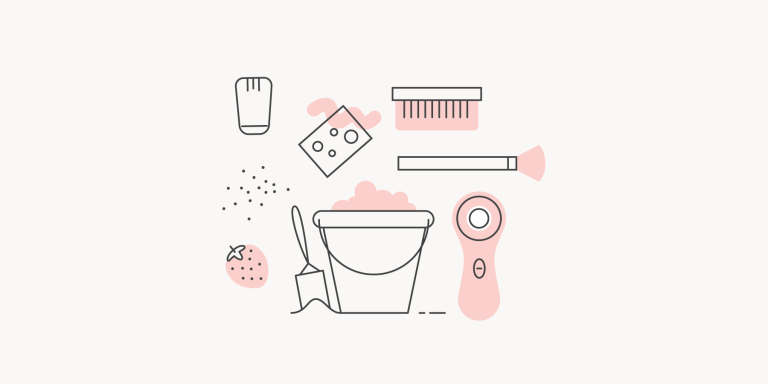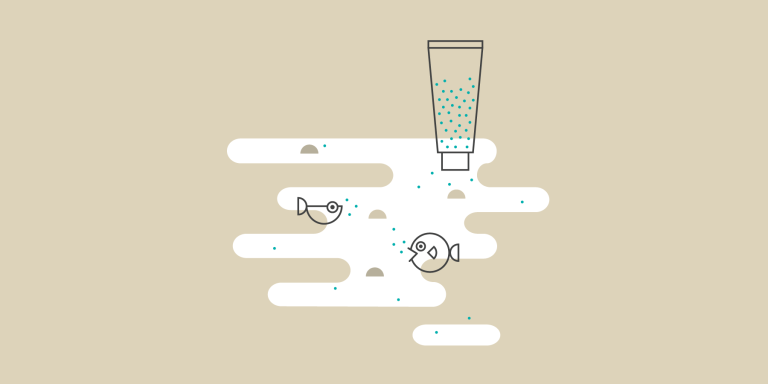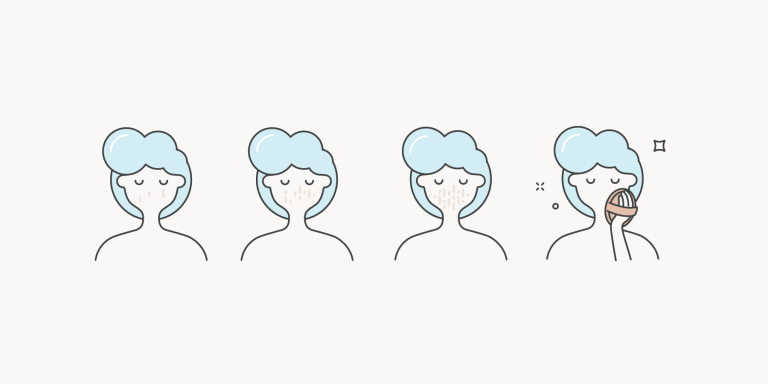How it works:
Share your skin goals and snap selfies
Your dermatology provider prescribes your formula
Apply nightly for happy, healthy skin
How it works:
How it works:
Share your skin goals and snap selfies
Your dermatology provider prescribes your formula
Apply nightly for happy, healthy skin
How it works:
How to exfoliate your skin
Salt, sand, sponges, and more



In this article
Especially in a cold, dry winter, exfoliation can be a great way to keep your skin healthy and clean. Exfoliation is the process of removing the oldest dead skin cells from the surface of your skin — and many people find it deeply satisfying. This guide explores physical exfoliation (sponges, brushes, or other materials). For chemical exfoliation (products that contain acids and enzymes), check out our other guides! Physical versus chemical is a personal choice, so use this guide to learn what’s a good fit for you.
What do salt, sand, and strawberries have in common?
Physical exfoliants are products that physically rub off dead, rough skin. Sand, salt, sugar grains, coffee grounds, jojoba beads, and even strawberry seeds are examples of physical exfoliants. Though physical exfoliants have been around for millennia, they can be harsh — so we don’t recommend aggressive exfoliation. Thanks to modern alternatives — like sponges, brushes and cloths — today’s exfoliants can help create smooth, glowing skin, without being too rough.

One method worth trying is the konjac sponge. It’s easy on the budget and easy on your skin! Konjac is made from fibers from the root of the konnyaku plant, native to eastern Asia. You’ll know your sponge is ready when it’s soaked with enough water to obtain a soft, gel-like consistency. Note that sponges are only as gentle as the amount of pressure you apply. So be kind to yourself! Use plain water or your regular facial cleanser, and switch to a fresh sponge every couple of months.
To brush, or not to brush?
Exfoliating brushes like the Clarisonic and the LUNA are other popular, more expensive options. In all honesty? The Curology team doesn’t feel these are necessary, although some people do well with them. If you’re really attached to your brush, remember not to overdo it. Overusing an exfoliating brush can cause low-grade irritation, so don’t use your brush more than 1–2 days a week. And if you do, pair it with your favorite moisturizer.
A note on microbeads

Microbeads have been popular in exfoliating washes and creams, but now they’re facing federal restrictions; these tiny plastic beads are harmful to waterways and the environment. Try to avoid them — they often end up being eaten by fish and could end up back on your plate! Showing your skin some love shouldn’t require artificial plastic beads. After all, a very soft microfiber washcloth works well too!
What’s microdermabrasion?
Another more involved process is microdermabrasion, which you may have experienced in the course of a facial at a salon. Microdermabrasion exfoliates by gently blasting a stream of microcrystals onto the face. Basically, it’s a skin-safe sandblasting! You can do this at home with a special device, although it’s certainly not necessary. Microdermabrasion works well on most skin types and can improve the appearance of age spots or dull skin. A series of treatments may be required, and results are modest. Some downtime afterward should be expected, as redness similar to a sunburn may persist for a few days.
Beware of overexfoliating

To be clear, you don’t need to exfoliate your skin. Be especially careful not to exfoliate inflamed acne or irritated skin! And don’t exfoliate too much: once or twice per week is all it takes. Why not, you ask? Overexfoliating creates a super shiny look you probably don’t want, because of the way light reflects off an overly smooth surface. If you leave a bit of natural roughness, light scatters to create a healthy look. Redness, tightness, and dryness are other signs of overexfoliating.
How to mix Curology and exfoliants
If you’re a Curology member, hold off on your physical exfoliators while you’re adjusting to your new formula! Do you tend to get dryness or flaking? Try using your Curology cream three days a week to start, or run a humidifier (especially if the air is dry). After adjusting to your Curology, add an exfoliant if you’d like.
Learn more
Trust your skin. A sponge or a brush can be helpful alongside Curology, but be gentle — you might not need a physical exfoliant at all. And don’t hesitate to experiment with more than one option. You be the judge, but don’t go overboard. Less is usually more!

Curology Team